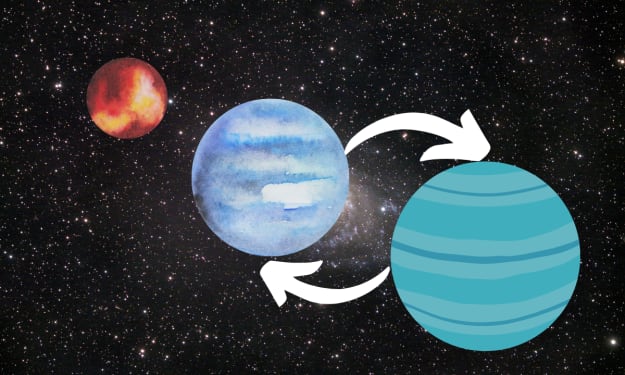How Big is The Universe?
How Enormous is The Universe?

How Enormous is The Universe?
The universe, a broad and puzzling element, extends a long ways past the constraints of human insight and understanding. Its limitlessness and intricacy have charmed space experts, physicists, and rationalists for quite a long time. While we have taken huge steps in understanding the universe, the genuine size of the universe stays quite possibly of the most significant inquiry in science.
The Noticeable Universe
How we might interpret the universe's size begins with the idea of the noticeable universe. This term alludes to the part of the universe that we can see or recognize from Earth, restricted by the speed of light and the age of the universe. Light from the most far off objects we can notice has gone for around 13.8 billion years, which is the age of the universe. Nonetheless, because of the development of room, the genuine distance to these items is a lot more noteworthy.
The recognizable universe is assessed to be around 93 billion light-years in distance across. This really intends that if we would go at the speed of light, it would require 93 billion years to cross from one edge of the recognizable universe to the next. Inside this huge span are many billions of universes, each containing millions or even billions of stars, alongside innumerable planets, space rocks, comets, and other heavenly items.
Past the Perceptible Universe
The perceptible universe is only a little piece of the whole universe. Past what we can see lies the imperceptible universe, which stretches out a long ways impossible for us to identify. As per current cosmological models, the universe could be limitless in degree. Assuming the universe is to be sure limitless, it would contain a boundless number of systems and stars, extending perpetually this way and that.
One method for conceptualizing the size of the universe is through the possibility of the enormous skyline. The grandiose skyline is the most extreme separation from which light had opportunity and willpower to contact us starting from the start of the universe. This skyline is continually growing as the universe ages and as the actual space extends.
The Growing Universe
The universe isn't static; it is dynamic and consistently evolving. Quite possibly of the main disclosure in current cosmology is that the universe is growing. This development was first seen by Edwin Hubble during the 1920s, who found that far off worlds are creating some distance from us, and the further away a system is, the quicker it is subsiding. This perception prompted the definition of Hubble's Regulation, which measures the connection between a universe's distance and its recessional speed.
The development of the universe implies that the distances between cosmic systems are expanding over the long run. This development is driven by a secretive power known as dull energy, which makes up around 68% of the all out energy content of the universe. Dull energy makes the development of the universe speed up, pushing cosmic systems separated at an always expanding rate.
The Multiverse Hypothesis
A few hypotheses propose that our universe may be only one of numerous in a bigger multiverse. The multiverse speculation places that there could be various universes, each with its own actual regulations and constants. These universes could be incomprehensibly not quite the same as our own, with various aspects, particles, and powers. The possibility of a multiverse is as yet speculative and stays a subject of extreme discussion and exploration in mainstream researchers.
Estimating the Universe
Estimating the size of the universe includes a mix of perceptions and hypothetical models. Cosmologists utilize different methods to gauge distances to heavenly items, like parallax, standard candles (like Cepheid factors and Type Ia supernovae), and redshift estimations. These techniques permit researchers to plan the design of the universe and gauge its size and age.
Cosmological models, in light of the standards of general relativity and quantum mechanics, give a structure to figuring out the universe's starting point, development, and extreme destiny. These models are tried and refined utilizing observational information from telescopes, satellites, and different instruments.
The Limitless Wilderness
The mission to comprehend the size of the universe is an excursion into the limitless wilderness. Every disclosure prompts new inquiries and more profound secrets. The universe's tremendousness challenges our creative mind and highlights the constraints of human information. However, it likewise rouses a feeling of marvel and interest, driving us to investigate, learn, and look for replies to the significant inquiries concerning our reality and the idea of the universe.
All in all, the universe's size is a demonstration of the unfathomable idea of the real world. Whether it is limited or endless, the universe's scale is past our full understanding. It is a sign of our spot in the universe and the getting through human longing to investigate the obscure and disentangle the secrets of the universe.
About the Creator
robail shahzadi
I've been writing since I learned how, but those have been lost and will never see daylight (I hope).
Excellent work. Looking forward
If you enjoy my work feel free to like but also never hesitate to share. Thank you for your patronage. .
Enjoyed the story? Support the Creator.
Subscribe for free to receive all their stories in your feed. You could also pledge your support or give them a one-off tip, letting them know you appreciate their work.






Comments
There are no comments for this story
Be the first to respond and start the conversation.